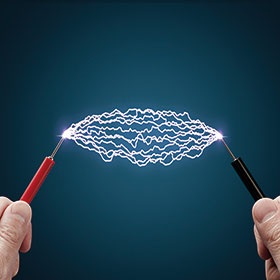

UL (Underwriters Technologies) gave a presentation on important new standards for testing and certifying smart electricity meters at African Utility Week, which took place in Cape Town between 16 and 18 May.
In a presentation entitled ‘Accelerating Technology Adoption with Product Standards’, the group’s general manager of electric utility services, Bill Colavecchio, outlined the ways in which these new standards can be used to help accelerate the adoption of new metering technologies in Africa.
All types of electricity meters need to comply with mandatory testing standards defined by the International Electrotechnical Commission (IEC), which have evolved over the years as the technology has evolved. The latest version of these standards, IEC62052-31, was introduced in 2015, and specifies product safety requirements for newly manufactured single-case metering equipment designed to measure and control electrical energy on 50 Hz or 60 Hz networks with a voltage up to 600 V.
“Certain requirements are, however, outside of the scope of these standards,” said Colavecchio, “and this has led to the voluntary adoption of a set of testing standards developed by UL, UL 2735, in both the US and Europe. These address previous design flaws in smart meters that have, in the past, been cause for concern to both manufacturers and utilities.”
He pointed out that trust is essential to the widespread adoption of new technologies. Manufacturers, utilities and end users all need to know that the technology is safe, reliable, performs as expected and is interoperable with other elements in the electricity supply ecosystem. “With dozens of vendors, hundreds of utilities and numerous regulatory bodies involved in the smart meter supply chain, the challenge for all stakeholders is how to determine which technologies and applications they can trust. The lack of common and reliable standards covering specific requirements and issues has been a barrier to entry all around the world, but specifically in Africa,” he said.
Users throughout the supply chain need to be assured of the fact that common, consensus-based standards are being used on both a national and international basis to test and certify all smart meters. This is where UL 2735, which addresses product safety, performance, reliability, cybersecurity, installation and other critical attributes of the product or system, has such an important role to play in facilitating and accelerating the adoption of smart metering technology in Africa. It ensures that all participants comply with the same standards and that the playing field is level.
“For manufacturers, testing and certifying their equipment in compliance with UL 2735 offers their customers a level of trust they haven’t had before,” said Colavecchio. “This helps to facilitate a speedy entry into the market for new products, which not only keeps the cost of sales down, but helps to secure market share.”
For more information visit www.ul.co.za
© Technews Publishing (Pty) Ltd | All Rights Reserved